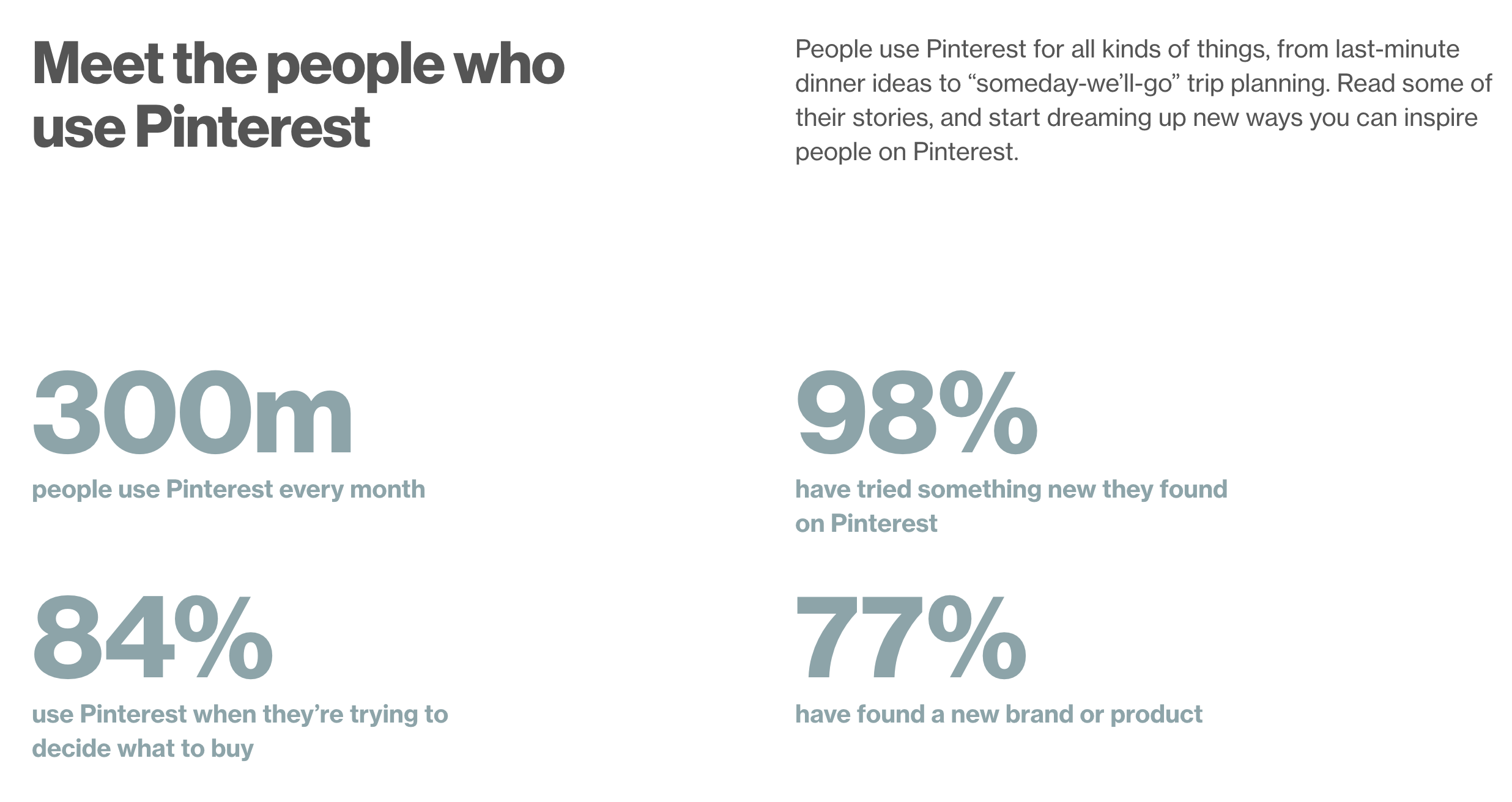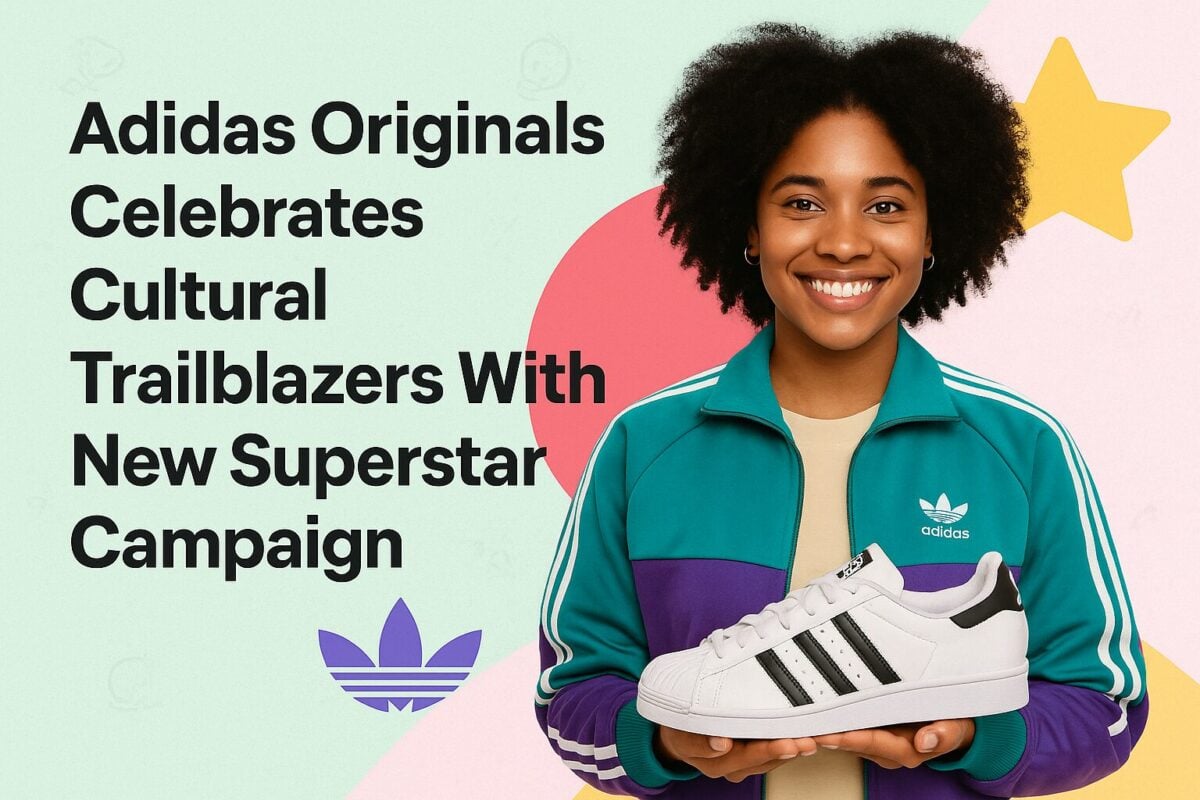Pinterest is a highly visual social platform that places its emphasis squarely on collecting and “pinning” pictures. Unsurprisingly it is most used by lovers of beauty – in such niches as fashion, beauty, and in particular home décor. While it has not enjoyed the spectacular success of Instagram, Pinterest nevertheless has a substantial following, and there are many active pinners.
Just how many Pinterest users are there, and what types of people frequent the platform? We have scoured the net and come up with 15 Pinterest statistics that should make marketers sit up and make sure that they don't miss what could be a massive opportunity for them.
15 Pinterest Statistics Every Marketer Should Know:
- 15 Pinterest Statistics Every Marketer Should Know:
- Pinterest has 300 Million Monthly Active Users
- 42% of All U.S. Women Use Pinterest, Compared to Just 15% of U.S. Men
- 18-24 Year-Olds are the Largest Users of Pinterest (But they Aren't Alone)
- Pinterest is More Popular with High Income U.S. Adults Than Those on Low or Medium Incomes
- 84% of Pinterest’s Users Come to the Platform When They are Trying to Decide What to Buy
- 98% of Pinterest's Users Tried Something New They Found on Pinterest
- 77% of Pinterest's Users Have Found a New Brand or Product on the platform
- Retail Brands Can See 2x Higher Returns on Pinterest Than on Other Digital Channels
- People on Pinterest are More than Twice as Likely to Say Pinterest Ads Feel More Personalized to Them Than on Other Platforms
- People on Pinterest are 28% More Likely to Buy a New Vehicle Within the First 90 Days of a Release
- 85% of Pinterest’s Users Access it With Their Mobile Devices
- Pinterest Delivers $2 in Profit for Every $1 Advertisers Spend
- “Self Care” has 140% More Searches on Pinterest
- Pinterest Predicted to Reach $1 Billion in Ad Revenue in 2020
- Women on Pinterest are 2.4x More Likely to Experiment with Different Makeup vs. Women on Other Platforms
Although Pinterest hasn’t increased in popularity as much as some of its competitors, it is still growing. Statista reports that Pinterest reached 300 million monthly users worldwide in Q1 2019. This is double its userbase in Q3 2016.

Find more statistics at Statista
Pinterest has grown steadily in popularity over the last three years, apart from a blip in Q2 2018, where it lost 8 million users compared to the previous period.
Eighty-five million of Pinterest's users are from the United States, with the remaining 215 million coming from the rest of the world. Pinterest reported in 2018 that about 80% of new sign-ups came from outside the U.S.
Pinterest burst into life in March 2010 and was the fastest site in history to reach 10 million unique monthly visitors. This was particularly amazing, considering that for much of this early time, it was an invitation-only site.
Pinterest has always had a strong feminine bias. Pew Research statistics show this fact quite clearly for Pinterest's U.S. audience. 28% of U.S. adults use Pinterest, but when you split things by gender, you can see that 42% of U.S. women run a Pinterest account, compared to just 15% of men.
This is probably not surprising. The most popular topics on Pinterest are those traditionally thought more appealing to women rather than men – fashion, beauty, and in particular, homeware.
Instagram, which is also image-focused, has a similar lop-sided appeal (42% women, 31% men). On the other hand, men have more of an interest in video (78% of men have YouTube accounts, compared to 68% women). Men also dominate the more business-oriented social networks – LinkedIn and Twitter.
The same Pew Research referenced above also tells us that Pinterest is most popular with a young audience. 38% of US 18-24 year-olds use Pinterest.
This is a slightly misleading statistic, however, because Pinterest is also popular with the older grouping of 30-49 year-olds (35% of this demographic operate a Pinterest account). Somewhat bizarrely, those in their late 20s are far less likely to use Pinterest (only 28%). Is this because that age group is more likely to be traveling, and using Instagram to share their holiday snaps?
Pinterest is also notable for having a higher percentage of older U.S. adults using the platform than Instagram. 15% of Americans over 65 use Pinterest, making this the third most popular social network for pensioners, behind just Facebook and YouTube. This group probably loves to pin images of their home décor and furnishings.
Pew Research also looked at the relative income levels of users on the leading social platforms. Pinterest shows a similar trend to LinkedIn – it attracts more wealthy people rather than poor people.
This makes sense. Many pins are aspirational – they show the items that people like the look of and would like to buy eventually. You are far less likely to do this if you are poor, and have to use most of your income paying for everyday essentials.
According to the Pew Research data, 41% of Americans earning over $75,000 p.a. use Pinterest, a very similar figure to Instagram usage at this income level. In comparison, only 27% of middle-income earners ($30,000-$74,999) use Pinterest (compared to 39% Instagram), and a mere 18% of low-income earners (<$30,000) operate a Pinterest account, compared to 35% using Instagram.
There is a very similar match between these stats and educational levels, too. 38% of those with a college education use Pinterest, compared with only 19% of those with a high school education (or less). The only other platform with this extreme variation is LinkedIn.
Pinterest has highlighted a few of the most notable statistics about its audience. One of these is the fact that people use Pinterest for all kinds of reasons. 84% of Pinterest's users admit to using Pinterest when they’re trying to decide what to buy.

Many of Pinterest's users have a keen interest in homewares and other items of beauty. As we have seen above, they also have higher than average incomes. Many use Pinterest as a research tool to find quality, visually appealing items to buy.
Pinterest also highlights how willing its users are to try things out. A massive 98% have tried something new they found on Pinterest. Pinterest users clearly don't just passively look at the beautiful pictures on the platform. They pin items they love and make a point of trying them out in their everyday lives.
Pinterest users are also clearly willing to change their ways as a result of the pictures they see on Pinterest. 77% admit to Pinterest that they have found a new brand or product. This shows the value of high-quality photography showcasing the best aspects of a product. It also indicates that any brand can benefit if their product looks good enough. Pinterest is ideal for small brands that are new to the market without the capability of implementing an extensive advertising campaign.
Recent research by Neustar found that participating retail brands in their study saw a 2x higher return on ad spend on Pinterest than from social media and a 1.3x higher return than from traditional search. They found that because people come to Pinterest to seek inspiration early in their shopping journey, Pinterest has a lasting impact on their final purchase decision.
The process can take some time, however. People often took a week or longer to purchase after seeing a brand's ads on Pinterest. Because people use Pinterest so early in their shopping journey, marketers need to adjust their attribution windows to give people time to make a purchase before declaring a return on ad spend.
-
People on Pinterest are More than Twice as Likely to Say Pinterest Ads Feel More Personalized to Them Than on Other Platforms
Pinterest believes that ads are more likely to enhance the experience on the platform than detract from it. People on Pinterest are more than twice as likely to say Pinterest ads feel more personalized to them than advertisements on other platforms. Your ad on Pinterest gets to be the answer to people’s dreams.
Research from Oracle Data Cloud that looked at aggregated new vehicle registration data using Polk Audience Measurement Solutions from IHS Markit shows that Pinners tend to be early adopters for new car models. Pinterest users are 28% more likely to buy a new vehicle within the first 90 days of a release than non-Pinterest users. They are also 31% more likely to buy a new SUV model after a new release and 13% more likely to buy a new truck model after a new release.
The research also found that Pinterest now reaches 1 in 2 U.S. adults who plan to buy a car in the next six months, and over 7 million people on Pinterest engage with car-related content.
It shouldn’t come as any surprise, but Pinterest is now heavily mobile-dominant. According to Pinterest, 85% of the visitors accessing their site (or using an app) do so on mobile devices. The days of expecting most people to be using computers for their social Pinning are long gone. Thre was a 45% increase in mobile searches in 2017 alone.
This is another reason why long, thin images perform so well on Pinterest. They display best on a phone held in a portrait aspect.
As we have seen in previous stats, many people use Pinterest to find the products they love to buy. 55% of Pinners say they use the platform to shop for and find products, more than 4x the rate of other digital platforms.
Analytic Partners measured Pinterest campaigns for five advertisers across packaged goods and retail. One of their conclusions was that Pinterest delivered $2 in profit for every $1 the advertisers spent. In terms of gross dollars, instead of profit, that translated into a $4.30 return per dollar spent.

Source: https://newsroom.pinterest.com/en/post/pinterest-100-the-top-trends-for-2019
Each year, Pinterest keeps a record of the top searched topics over the preceding 12 months. The trends represent what the world's most "style-inspired, parenting-passionate, well-traveled, food-smart people" dream about for the year ahead.
Self-care was one of the most searched topics in 2018, up 140% in searches.
Some other hot topics within the health and fitness category included elderberry recipes +685%, bakuchiol +275%, super powders +144%, sleep optimization +116%, nutrition plans +475%, goat milk soap +231%, band workouts +1913%, sober living +746%, beeswax wraps +146%, and ginger oil +659%. It must be said that the popularity of some of these terms is somewhat surprising for such a visual platform.
In September 2018, eMarketer made predictions for predicted Pinterest ad revenues. They observed that Pinterest ad revenue in 2016 was $269.4 million. They expect this to increase by 30-40% per year over the next few years, topping the $1 billion mark in 2020. "Marketers are seeing Pinterest’s potential for reaching consumers as they’re considering products. Placing ads is one way they’re inserting their brands into that interaction,” said Monica Peart, senior forecasting director at eMarketer.
-
Women on Pinterest are 2.4x More Likely to Experiment with Different Makeup vs. Women on Other Platforms
Pinterest's list of most searched topics of 2018 also highlighted trends in searches for beauty products. It found that women from all different cultures, with all different skin tones, came to Pinterest to find ideas. “Pinterest women” are 2.4x likely to experiment with different makeup vs. women on other platforms.
Some of the biggest increases in beauty-related searches in 2018 were cropped bangs +51%, liquid exfoliator +58%, going gray +879%, standout lip color +467%, witch hazel +305%, lilac hair +1077%, glossy makeup +89%, powder dip nails +442%, natural lash lifts +52%, and almond nails +97%.



